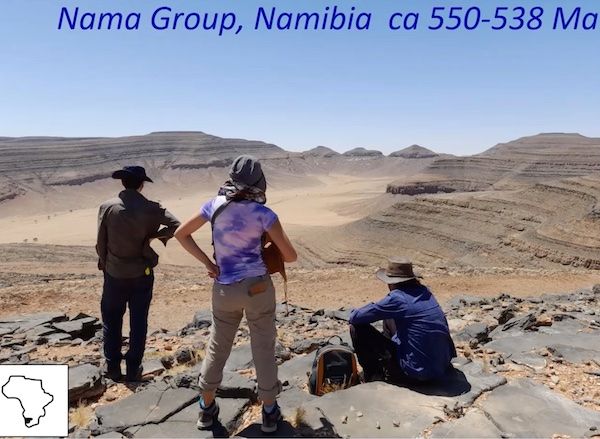What triggered the Cambrian Explosion
What triggered the Cambrian Explosion by Prof Rachel Wood University of Edinburgh
At the beginning of the Cambrian period there was a huge evolutionary burst of life markedly increasing the diversity of animals which includes many of the major groups of life we see today. The question has always been: “what triggered this event?”. The talk by Prof Rachel Wood” ( University of Edinburgh) on February 13th shows just how much work has gone into that question and that answers are finally being found. What is proposed is that the roots of the Cambrian explosion are not in the Cambrian but in the Ediacaran.
Prof. Wood explained that for the vast majority of time the planet was dominated by unicellular life. Then between 575-540Ma organisms on the sea floor changed dramatically. These organisms - the Ediacara biota, were much more complex but at what point the first animal appears is actually still disputed. Although if one looks at various characteristics that suggest complexity eg. burrowing, surface locomotion or biomineralisation, it can be seen that they do start to appear in the Ediacaran. Then at about 540Ma a huge abundance and diversity of life appeared. This being the “Cambrian Explosion”.
Prof. Wood and her multidisiplinary team along with international collaborators have been working on this problem for many years. The main location for their field work is in Namibia. The reason this area is so important is due to the ability to a.) date the ash beds to a narrow time sequence of between 547 - 538 Ma a critical 10 million year period where they find these first fossils that are known to be bilaterians b)the area is divided into two basins, c) the necessary outcrops are present and vegetation free.

Research site in Namibia
One fossil find they have named Nomacalathus shows bilateral symmetry which suggests it is an animal and although from the Ediacaran biota is very similar to the Entoprocta found in China from about 520Ma. Therefore she suggests that they are now pulling the Cambrian Explosion down into older rocks.
One suggestion as to the cause of this increase in diversity is related to changes in oxygen levels. When oxygen levels increase it leads to an increase in cellular energy production. This could lead to a development of greater complexity with an increase in size, more complex body structures and enable more energy-intensive movements.
Part of the work in this area is in tracking anoxia. For this they use proxies one being the iron speciation paleoredox proxy which can distinguish three major oceanic redox states - oxygenated, ferruginous and euxinic. Anther proxy is the Cerium anomaly which can track manganous conditions. These two provide detail necessary to understand oxygen distribution in the basins under study.
From this work they discovered that the organisms only lived in well oxygenated areas of the basins. To begin these areas were very restricted but as oxygen levels increased so did habitable area which itself allowed spread into new areas and also an increase in diversity. Not only is change in habitat important but most probably nutrient levels will play a part but is difficult study. Individual animal physiology and adaptability will also play a part.
Prof. Wood then summed-up the talk with the following conclusion:
Late Ediacaran metazoans restricted to well-oxygenated, but dynamic, oases
There were differential turnovers and body size changes within the Cambrian
- may have been structured by intervals of dynamic shallow marine
redox/nutrient input.
Physiology may cause differing responses to these drivers
-created distinct record of early metazoans during the Cambrian Explosion, and also the form of its demise.
Oxygenation expanded habitats - dynamic chemocline - and governed ecological complexity
Cambrian Radiation was not linear, but cyclic, driven by oxic pulses